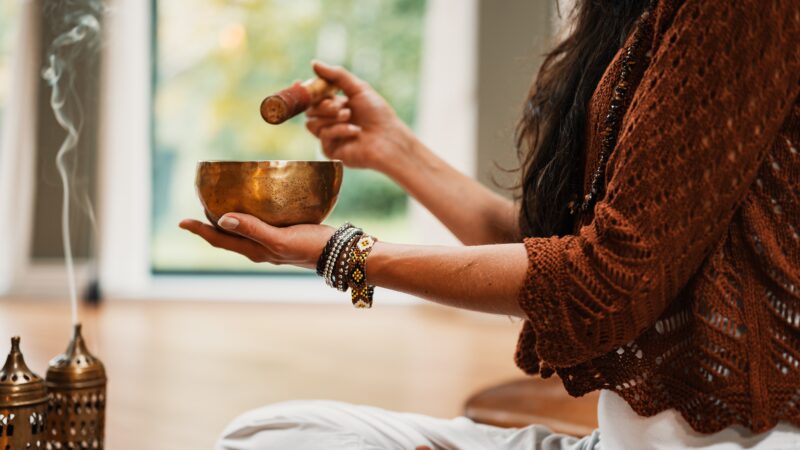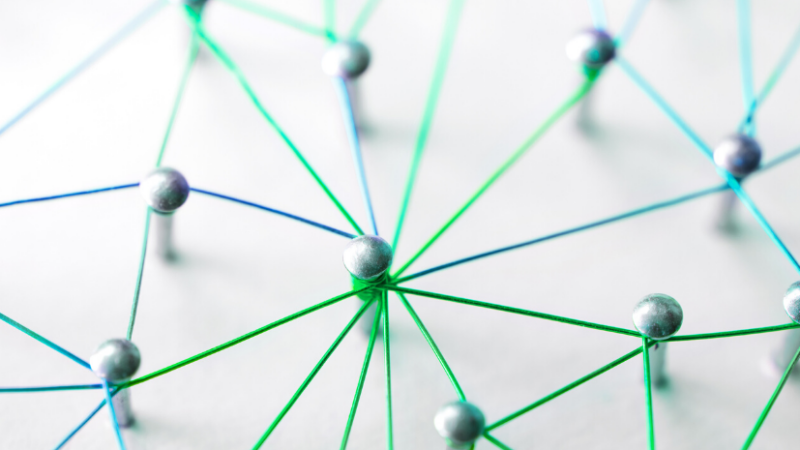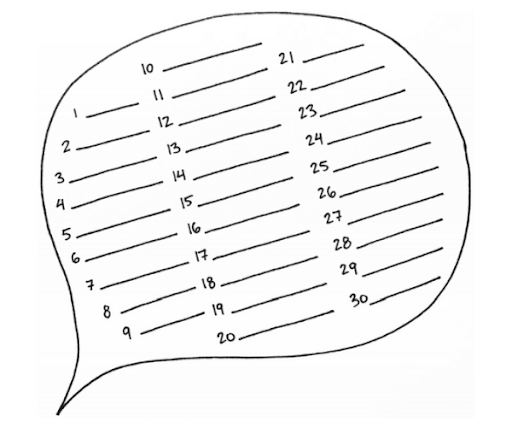Open-Eye Meditation (And Why You Should Be Doing It)

It can be helpful to begin with some retraining of the relationship between our eyes, our small mind, and our small self. We can begin to return our eyes to their natural condition and have the information move to awake awareness.
According to the American Foundation for the Blind, “vision is the product of a complex system of which the eyes are only one part. The processing of visual information—the receipt of visual stimuli through the eyes, its interpretation by various brain centers, and its translation into visual images—has been estimated to involve as much as 40 percent of the brain.”
When our eyes are darting around or scanning for a specific threat, we are on alert. Sometimes our attempts to focus ourselves by narrowing our eyes and concentrating can keep our brain in a fixed, task-positive mode. Our goal in practicing effortless mindfulness is to be able to shift to another operating system, the end point of which is open-hearted awareness, in which all our senses and systems—including vision—are functioning in their natural state: open, relaxed, clear, and integrated. To do this, we need to learn how to shift our awareness and live with our eyes open.
Here are some helpful hints for sustaining an open gaze while shifting awareness. You don’t necessarily need to experience all of them as I describe them. Use any of the following hints that work for you:
- Relax your eyes and soften your gaze so that your eyesight is not dominant and all your senses are experienced equally.
- Instead of looking through a narrow tunnel of vision or in a pinpointed way at one object, see the forest as well as one tree. Put your pointer fingers together up above your head in front of you and then part them to either side, drawing a big circle in front of your body. Let your gaze open to include the entire circular area all at once so that you are seeing in a more open way.
- Rather than looking at one object, create a diffused view like a soft lens of a camera by looking to the wider scene of what’s in front of you.
- Extend one hand in front of you with your palm facing you at the distance you would be looking at a friend’s face. Look at your hand and the space around it. Now drop your hand and look at the open space. If your eyes habitually focus on the first object you see, repeat the previous steps until you get a feel for resting your eyes on objectless space.
- Notice that your eyes do not operate like your hands. You do not go out to see something as your hands go out to pick something up. Your eyes work in a similar way as your ears. Just as your ears are receiving sound, light is reflecting off objects and coming into your eyes. What does it feel like when seeing is receiving?
- Rest back as the light comes to your eyes and then goes to open-hearted awareness while all your senses are open. Feel like you are equally aware of all your senses rather than focusing on seeing or thinking as primary.
- Feel like you are receiving light as you soften your eyes while having a wide-open view of the periphery.
This is an excerpt from The Way of Effortless Mindfulness: A Revolutionary Guide for Living an Awakened Life by Loch Kelly.

 Loch Kelly, MDiv, LCSW, is a leader in the field of meditation and psychotherapy. He is author of the award-winning Shift into Freedom and founder of the Open-Hearted Awareness Institute. Loch is an emerging voice in modernizing meditation, social engagement, and collaborating with neuroscientists. For more, visit lochkelly.org.
Loch Kelly, MDiv, LCSW, is a leader in the field of meditation and psychotherapy. He is author of the award-winning Shift into Freedom and founder of the Open-Hearted Awareness Institute. Loch is an emerging voice in modernizing meditation, social engagement, and collaborating with neuroscientists. For more, visit lochkelly.org.
Buy your copy of The Way of Effortless Mindfulness at your favorite bookseller!
Sounds True | Amazon | Barnes & Noble | Indiebound
A Ceremony to Greet the Cardinal Directions

Greeting the cardinal directions is a common practice in shamanic cultures. There is no one right way shamans greet the directions. Honoring the directions was often based on weather patterns in the local area, specifically which direction the wind entered the land.
I encourage you to find your own way to greet the directions. We all know East is the direction of the rising sun and West is the direction of the setting sun. The direction away from the equator reminds us of winter and cold, while the opposite direction invokes a feeling of warmth.
Some people make medicine wheels that they stand within when doing ceremonial work. You might find objects in nature such as a feather, rock, or crystal. Or you might light a candle or put out a bowl of water to honor qualities you feel represent a given direction.
An Exercise to Call in the Directions
As you did when calling in helping spirits, take some time to reflect on the directions.
Stand and face East. Close your eyes and place your hands on your heart. As you focus your imagination on the East and the rising sun, what feelings emerge for you?
Turn South and let your imagination soak in the qualities that come to you associated with the South.
Face West and take a deep breath and exhale. In your mind’s eye, see and feel the sun setting. What associations does this bring to you?
Next, face North and observe how you feel in your heart. What meaning does the North hold for you?
In some cultures, the direction of Below is greeted to honor Earth.
And the direction of Above is welcomed to honor Sky.
Lastly, the direction of Within is acknowledged to honor the power of spirit and divine light that resides in each us.
Excerpted from The Book of Ceremony: Shamanic Wisdom for Invoking the Sacred in Everyday Life, by Sandra Ingerman.
___________________________________________________________________________________________________
 Sandra Ingerman, MA, is an award-winning author of 12 books, including Soul Retrieval: Mending the Fragmented Self, Medicine for the Earth, Walking in Light, and The Book of Ceremony. She is the presenter of several audio programs produced by Sounds True, and she is the creator of the Transmutation App. Sandra is a world-renowned teacher of shamanism and has been teaching for more than 30 years. She has taught workshops internationally on shamanic journeying, healing, and reversing environmental pollution using spiritual methods. Sandra is recognized for bridging ancient cross-cultural healing methods into our modern culture, addressing the needs of our times.
Sandra Ingerman, MA, is an award-winning author of 12 books, including Soul Retrieval: Mending the Fragmented Self, Medicine for the Earth, Walking in Light, and The Book of Ceremony. She is the presenter of several audio programs produced by Sounds True, and she is the creator of the Transmutation App. Sandra is a world-renowned teacher of shamanism and has been teaching for more than 30 years. She has taught workshops internationally on shamanic journeying, healing, and reversing environmental pollution using spiritual methods. Sandra is recognized for bridging ancient cross-cultural healing methods into our modern culture, addressing the needs of our times.
Sandra is known for gathering the global spiritual community together to perform powerful transformative ceremonies, as well as inspiring us to stand strong in unity so we do our own spiritual and social activism work while keeping a vision of hope and being a light in the world.
She is passionate about helping people to reconnect with nature. Since the 1980s, thousands of people have healed from past and present traumas through the classic cross-cultural shamanic healing method Sandra teaches called “Soul Retrieval.”
She is a licensed marriage and family therapist and professional mental health counselor. She is also a board-certified expert on traumatic stress. She was awarded the 2007 Peace Award from the Global Foundation for Integrative Medicine. Sandra was chosen as one of the Top 10 Spiritual Leaders of 2013 by Spirituality and Health magazine.
Sandra has had two new books released in 2018. The Hidden Worlds was co-written with Katherine Wood and is a novel written for young adults to help them navigate the changing world. The Book of Ceremony was written for a shamanic and general audience on how to bring the sacred into daily life by performing shamanic ceremonies designed for our times and the challenges we are facing today.
 Buy your copy of The Book of Ceremony at your favorite bookseller!
Buy your copy of The Book of Ceremony at your favorite bookseller!
Sounds True | Amazon | Barnes & Noble | Indiebound

Sound Healing & Meditation: How Vocal Toning Can Deepen Your Practice
Have you ever sat down to meditate and found it nearly impossible to relax and find the stillness you were hoping for? There’s a little known sound healing secret that may just help you to overcome the initial restlessness when starting your practice.
The secret can actually be found in the opposite of silence, by using the sound of your voice and vocal toning to ground yourself, calm your nervous system, and clear your mind.
How Sound Deepens the Silence
Chanting, mantra, and vocal toning have long been practiced in tandem with silent sitting meditation by both ancient and modern yogis and buddhists. You may have experienced this yourself in a yoga class meditation that starts with three AUM’s. There are different reasons why various types of voice are incorporated into the practice, but when it comes to preparing for silence, knowing this one concept can make all the difference.
When we begin a practice by filling our bodies and our meditation environment with sound, whether that be our own voice, the sound of a singing bowl, gong, harmonium, or other instrument, it creates contrast with silence when the sound is gone. There is a big difference in how we experience silence when the silence is preceded by sound, and once the sound is taken away, the silence can be experienced much more deeply.
Peace Is A Stable Consistent Vibration
The foundational practice here is to use your own voice to create a stable consistent vibration within your body. By repeatedly toning a vowel sound such as Eh, Ah, Oh, Uh, or AUM, on the same note, your body and mind will automatically begin to relax and become more calm and focused. The vagus nerve, which runs through your neck, is right next to your vocal chords, and the effect of the voice on nervous system regulation is well studied.
Vocal toning and humming increases nitric oxide, which can reduce blood pressure, slow the heart rate, and slow brain wave speeds from high functioning beta to slower meditative states of alpha, theta, delta. You can even literally sing yourself to sleep (I know because I’ve done this myself by accident while toning!)
Singing IS Breathwork – Breathing IS Sound Healing
Sound healing is not just about audible frequencies, but also about rhythms and the frequency of rhythms within the body. The breath is one of the most fundamental rhythms we can access for reducing stress and restoring peace within the body.
It is well known that extending an exhale longer than the length of the inhale will slow down the heart rate and calm the nervous system. When we’re singing, toning, humming, and extending the length of that sound, we are essentially extending the length of the exhale to be longer than the inhale.
This is why singing IS breathwork taken to the next level with the sound of your voice. While it may seem a bit awkward at first, your body LOVES the sound of your own voice, and you can nourish your body in profound ways using the gift of this internal instrument.
How to Practice Vocal Toning Before Meditation
Go ahead and get into your meditative position, whether sitting or laying down. For best results, I recommend at least 3-5 minutes of toning or humming to really give yourself time to get lost in the sound.
- Using your voice, find a note that feels comfortable in the moment. This will likely be a lower note in your normal speaking range, or maybe even slightly lower than your normal speaking voice. It should be a note that doesn’t create any strain or tension in your voice, and can allow you to relax while maintaining the pitch.
- Find a vowel sound that feels good to you. For the most grounding and calming effect use Ah, Oh, Uh, or a combination of all three such as AUM (Ah, Oh, Um). For more “clearing effect” EE, and Eh sounds can be effective for releasing stuck and negative thoughts or emotions. Humming with the mouth closed is also a very effective method that can be thought of as singing down into your own body by keeping the sound inside rather than projecting it out.
- At the beginning of each cycle of toning, take a long deep breath through the nose to receive as much breath as you can, and then begin to let the sound emerge from your voice in a slow and controlled manner. Try to extend the length of your sound by releasing only enough breath to create the sound. You may find that after a few rounds of toning you are able to take in more breath and extend your sound for longer periods of time.
- If you feel any self-consciousness, awkwardness, embarrassment coming up, this is totally normal, even for experienced singers! Let it be an opportunity for letting go of any self-judgment and try to stick with the practice. You will find that these feelings will soon go away and will be replaced with feelings of peace and even the experience of timelessness.
- See if you can feel the subtle vibrations traveling through your body. You will likely find that you can feel the sound traveling all the way to your toes, fingers, the hair on your head, various parts of your skin. Just notice where the sound is traveling.
- To take things even deeper, bring in the emotions/intentions of gratitude or love and visualize those positive feelings riding on the sound waves from your voice to every cell of your body, filling yourself with beautiful vibrations.
- Practice for 3-5 minutes or however long feels most comfortable to you, and when you are ready, let your final sounds dissipate into silence. Continue to breathe normally and take notice of how much deeper the silence now feels. You may continue your silent meditation practice from there for however long you desire.
Finding Your Homenote and Balancing Energy with the Voice
If you’re enjoying the use of your voice for stress relief and for starting your meditation practice, there are ways to get even more intentional with the voice. We have the amazing ability to clear energetic blockages, restore balance to energetic deficiencies, and return to a state of peace using our own voices. You can learn more on my website 1:11 Sound Healing.
Nicholas Penn

Nicholas Penn is a life-long musician, producer, and sound therapist with a certification in Sound Healing through Globe Sound Healing Institute. Nicholas is passionate about educating and empowering individuals to access the gift of their own voice to restore peace and improve wellness for themselves and loved ones. He is also a producer for Sounds True and leads strategy and content creation for the Sounds True YouTube channel and Eckhart Tolle Spotify Channel. Learn more at 111soundhealing.com
The Power of Mapping Your Emotions
It’s in everyone’s best interest to learn to remove the emotional blinders and identify emotions accurately, both the uncomfortable and the upbeat ones. After all, unpleasant emotions are normal and natural, a fundamental part of being human. Emotions fluctuate on a daily basis, often several times in a given day. If you didn’t experience negative feelings now and then, the positive ones wouldn’t be as noteworthy or joyful; your emotional life would likely be unnaturally narrow. You would also be deprived of the opportunity to glean important insights into yourself. Feelings, both the good and the bad, are silent messages, alerting you to pay attention to something in your personal or professional life, in your behavior, or in the world around you.
Instead of separating emotions into categories such as good or bad, positive or negative, happy or sad, it’s better to view all your emotions as useful information, as “evolutionarily evolved responses that are uniquely appropriate to specific situations,” says Karla McLaren, MEd, author of The Language of Emotions. “When you stop valencing, you’ll learn to empathically respond to what’s actually going on—and you’ll learn how to observe emotions without demonizing them or glorifying them.”
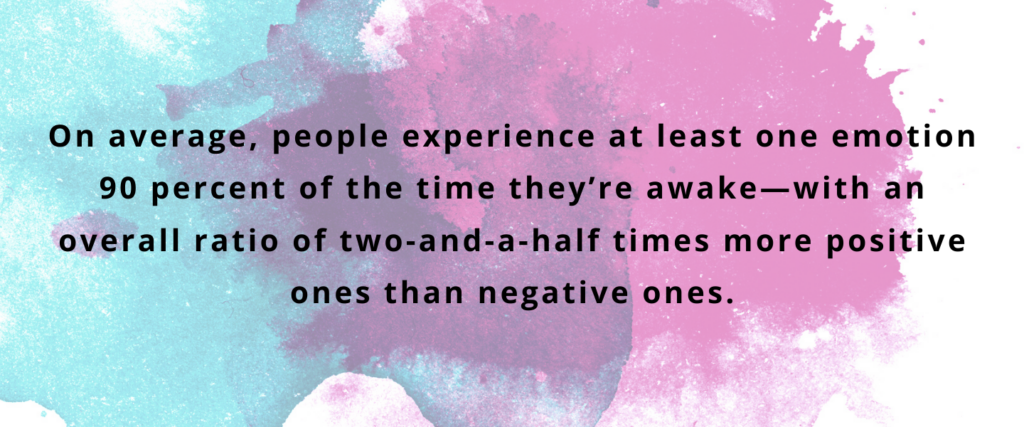
Being able to recognize and express what you’re feeling helps you better understand yourself (leading to greater self-knowledge); validate your emotions and tend to your own emotional needs; and take steps to address those feelings directly by communicating and responding to them effectively. Having emotional self-awareness can motivate you to make healthy changes in your life, take action to improve the world around you, and become more psychologically resilient—that is, better able to cope with crises and rebound from setbacks.
Learning to Unpack Your Emotions
For some people, engaging in free association can clear the cobwebs from their minds, almost like opening the cellar door to a musty basement and letting in light and fresh air. To do this, you might take a break and consider how you’re feeling about what you’re doing, reading, seeing, or thinking every few hours throughout the day. If a general word comes to mind—such as stressed, anxious, or angry—dig deeper and ask yourself what other emotions you might be feeling (maybe fear or annoyance) along with it. If you do this out loud in unedited, private moments, you might find yourself blurting out what you’re really thinking or feeling, revealing the emotions that are taking a lot of energy to keep inside. This is really about unpacking your suitcase of feelings, or untangling the knot of emotions that is taking up space inside you.
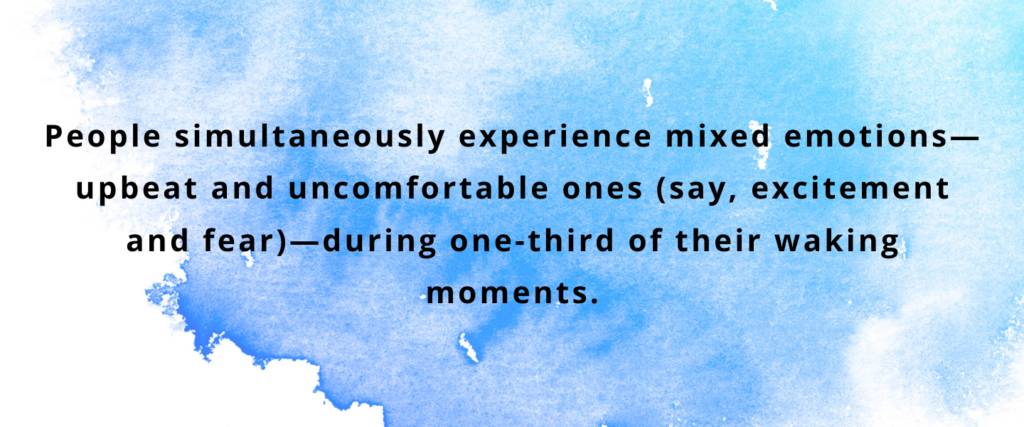
When you think about this in the abstract, it can be hard to pinpoint how you’re feeling. You may just see a swirling mass of a feeling quality such as “dread” or “foreboding” rather than recognizing the specific emotions you feel. To get to the root of your feelings, spend five minutes looking at the word cloud below—no more than five so that you don’t have time to filter your responses—and choose the emotions that resonate with your mood-state lately.
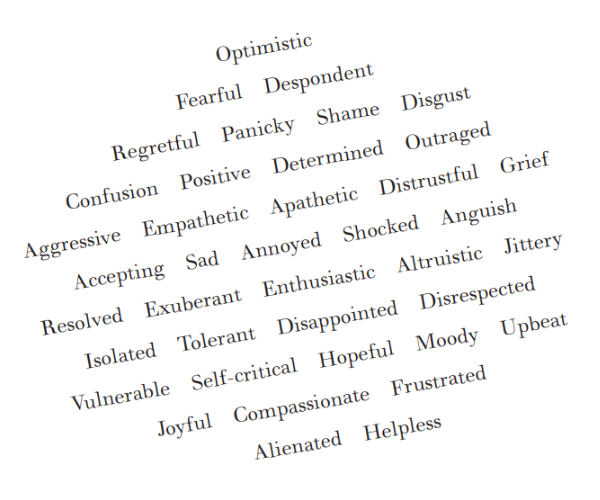
If reviewing these words evokes other feelings for you or if words or phrases that apply to you were not on this word cloud, jot these down in the blank word cloud that follows. Give yourself another five minutes to think about your recent state of mind and jot down phrases, images, or words that occur to you. This is your opportunity to personalize it without any limits or restrictions. If you feel stymied or draw a blank initially, think about your recent responses to current events or situations in your personal life or on the world stage. Try to be as honest as you can by focusing on how you’re really feeling when no one is watching—free-associate without judging, censoring, or revising what you write down.
Once you’ve finished your list, look at the order of the words you wrote down: Did they progress from all negative to increasingly hopeful? Do they portray an internal tension or friction in going back and forth between various feelings? If all the words are positive, consider the possibility that you may be in some degree of denial, focusing only on the window dressing rather than the emotions that lie beneath the surface. Also, consider this: Is there a pattern of shallow, visceral reactions that came out initially, followed by more complex thoughts and feelings? If so, think about whether you’re giving yourself enough time in your life to reflect. If you came out with highly intellectualized words or phrases first, it might suggest that you put on a bit of a facade when engaging with the world, and you might benefit from striving for a deeper engagement or familiarity with your emotions.
This is an excerpt from Emotional Inflammation: Discover Your Triggers and Reclaim Your Equilibrium During Anxious Times by Lise Van Susteren, MD, and Stacey Colino.
Buy your copy of Emotional Inflammation at your favorite bookseller!
Sounds True | Amazon | Barnes & Noble | Bookshop
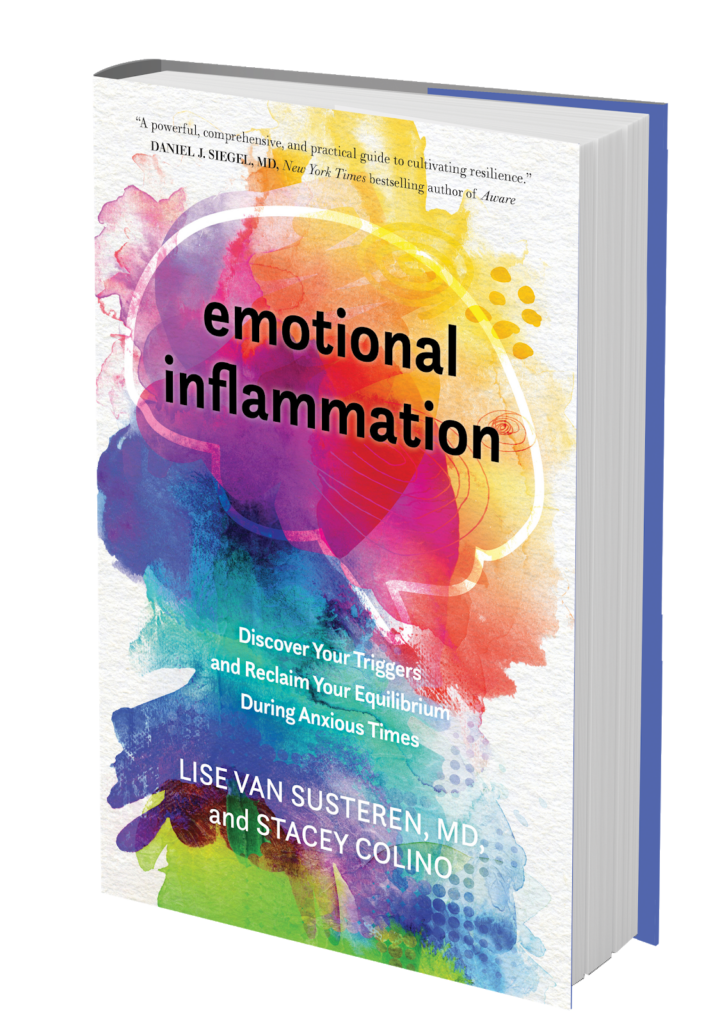
The Hidden Meaning of The Belly in Yoga
 Most of us have lost our connection to the mysterious forces at play in the abdominal region, as well as to the appearance, function, and location of the organs and glands within it. We know that this area is responsible for digestion and assimilation, but in most Western cultures, a belly is considered healthy only according to its outer appearance: flat, “cut,” and firm. Good posture is supposed to be chest up, shoulders back, gut in. Emotionally, for many, the belly receives the brunt of our dysfunctional attempts to deal with negative feelings such as anger, fear, or low self-esteem.
Most of us have lost our connection to the mysterious forces at play in the abdominal region, as well as to the appearance, function, and location of the organs and glands within it. We know that this area is responsible for digestion and assimilation, but in most Western cultures, a belly is considered healthy only according to its outer appearance: flat, “cut,” and firm. Good posture is supposed to be chest up, shoulders back, gut in. Emotionally, for many, the belly receives the brunt of our dysfunctional attempts to deal with negative feelings such as anger, fear, or low self-esteem.
In general, popular Western culture has placed more prominence on the head (objective intellect) and heart (individual soul) centers for discernment and transformation, while overlooking what many Eastern or so-called primitive cultures consider an essential step—the prerequisite descent into the depths of our being (lower centers), which is necessary before the ascent toward higher levels of awareness (upper centers). Our attention has moved away from the profound intelligence of the lower physical and emotional center of the body—our “guts.”
However, remnants of understanding are still found in common expressions in our languages, intimating a time when we recognized the power of the lower centers. In English, to have “a gut feeling” suggests a deep understanding that often is hard to explain logically, and in the past, feelings that come from deep in our center were considered more reliable than those that came from “above”: the heart or the head. Then there is someone with “guts,” which implies courage and unwavering integrity.
In Japan, the word hara can be simply translated as “belly,” but the roots of its meaning extend far beyond the physical abdomen. In Japanese culture, hara takes on a meaning that involves almost every aspect of life. It implies all that is considered essential to a person’s character and spiritual evolvement. Hara is the center of the human body, but not just of the physical body. In many idiomatic Japanese expressions where the root word is found, the meanings suggest a deeper context for the term. In his book Hara: The Vital Center of Man, Karlfried Graf Dürckheim describes one such expression: Hara no aru hito. It suggests not only one who possesses “center” physically, as in posture and balance, but also one who maintains balance in every way, including emotionally and mentally. This person is capable of tranquility in the face of strain, moves in and about the world with serenity, and possesses an inner elasticity that allows quick and decisive responses to any situation that arises. The hara is also seen as the place where the body’s vital life energies collect and are expressed, whether through physical movement or energetic presence.
Hara means an understanding of the significance of the middle of the body as the foundation of an overall feeling for life.
—Karlfried Graf Dürckheim
It is this very quality of hara that we look for in our yoga practice. What is referred to in Patanjali’s Yoga Sutras as sthira sukham is a state of unconditional calm that is not dependent on any outward circumstances. When in it, we command heightened sensitivity and an increased readiness to meet the unexpected. Here we realize that our capacity for appropriate response in the practice of asana can only come from the genuine absence of tension, coupled with the correct attitude of mind and lightness of heart. Throughout the practice of yoga poses, cultivating softness in the belly helps release a subtle downward flow and sense of fluidity that can be felt there and moving down into the pelvic floor, providing an intuitive invitation to move more deeply in all poses, especially those that turn or lengthen through the waist.
How the belly “thinks” intuitively could be a function of what science is now calling our second brain, or the enteric nervous system, which is an extensive network of neurons embedded in the lining of our gastrointestinal tract, from esophagus to anus. In addition to its handling of nearly all the digestive functions of our intestines, it is important to understand how this system of neurons intimately connects with our autonomic nervous system and, through the vagus nerve, becomes a critical component of parasympathetic control of the heart, lungs, and intestines.
The vagal channel of communication between the abdominal organs and the brain includes branches of cardiac and pulmonary ganglion, which suggests a shared relationship among these organs as well and offers a scenario in which the interrelationships are established both anatomically and energetically. The enteric system includes many of the same neurotransmitters found in the brain, including dopamine (in the intestines, it reduces peristaltic movement and maintains the inner linings of the intestinal tract; in the brain, it stimulates desire and motivation for reward response, or pleasure), serotonin (in the intestines, it stimulates peristaltic movement; in the brain, it regulates mood, appetite, and sleep), and acetylcholine (in the intestines, it stimulates peristaltic movement; in the brain, it regulates arousal, attention, memory, and motivation).
Numerous scientific studies have shown that the voluntary control of slow breathing has a substantial positive effect on our parasympathetic response. There is multidirectional communication via vagal signals to and from the brain to quiet frontal cortical activity, as well as an inhibitory influence upon the heart and sympathetic nervous system activity to and from the gastrointestinal tract that improves peristaltic function while strengthening immune system response in the gut.
Breathing is not merely an in-drawing and outstreaming of air, but a fundamental movement of a living whole, affecting the world of the body as well as the regions of the soul and mind.
—Karlfried Graf Dürckheim
This is an excerpt from Gravity & Grace: How to Awaken Your Subtle Body and the Healing Power of Yoga by Peter Sterios.

Peter Sterios is a popular yoga teacher and trainer with over four decades of experience. He’s the founder of LEVITYoGA™ and MANDUKA™, as well as KarmaNICA™, a charitable organization for underprivileged children in rural Nicaragua. Sterios taught yoga at the White House for Michelle Obama’s anti-obesity initiatives for three years, and in 2018 he was invited to the Pentagon to share yoga’s therapeutic effects with the US Marine Corps. He resides in San Luis Obispo, CA. For more, visit LEVITYoGA.com.
Read Gravity & Grace today!
Sounds True | Amazon | Barnes&Noble | Indiebound

Standing Together, and Stepping Up
Dear Sounds True friends and community,
While holding a mirror to our own organizational accountability, Sounds True unequivocally stands in solidarity with the Black community, the family of George Floyd, and the many others who have been victims of police brutality and ongoing racial injustice.
We stand with and for our Black employees, our Black authors and colleagues, our Black customers, and all of the protestors and social change activists—past, present, and future— who are working to put an end to racism in every corner of our society.
And we are committed to not just stand in solidarity but to step up.
Since George Floyd’s murder, we have been having many in-depth discussions among the 125-person staff at Sounds True about the most meaningful actions we can take as a transformational learning company to help educate ourselves and our community and contribute to the dismantling of racism.
We have been asking ourselves questions such as:
- How can we best use our platform to better amplify the voices of wisdom teachers who are Black, Indigenous, and People of Color (BIPOC)?
- What’s in our Shadow, as individuals and as an organization? What unconscious areas must now be brought into awareness?
- And how do we actively address these areas so that we can evolve as an organization and be a force of genuine service in the world?
The answers to these questions are not simple, quick, or easy. It has taken me a while to write this email to you, our beloved customers and Sounds True community, because we have felt as a team the need to listen carefully and look deeply within in order to lay out an action plan moving forward that will contribute to meaningful and substantive change.
Anything less falls short of what I believe this moment is asking of us.
We also want to learn and evolve in partnership with you. We are learning and growing together as a community, and it has been important for us to create a moving-forward action plan that invites engagement from our entire audience.
With arms wide open, I invite you to witness, support, and step up with us in the following ways:
- Over the next two years, Sounds True will be undergoing an in-depth Diversity, Equity, and Inclusion Training in the workplace. This training initiative has been in development for over a year, and will be provided by TMI Consulting, led by Dr. Tiffany Jana. Dr. Jana is coauthor of the books Overcoming Bias, Erasing Institutional Bias, and Subtle Acts of Exclusion. As part of the training, we will be uncovering how unconscious bias, microaggressions, and micro-acts of exclusion show up in the workplace, in our personal lives, and even in our products. The training also includes a thorough audit of Sounds True’s hiring practices, HR policies, marketing materials, and more.
- Sounds True also wants to include our customers, authors, and partner businesses in the introductory phase of this training process that we will be embarking upon. With that in mind, we are hosting a three-part webinar series on “Healing Racism” with Dr. Jana, beginning on Wednesday, June 24, at 8:00 pm ET | 5:00 pm PT. The series is free, and we are inviting our customers, authors, and business associates to join the Sounds True staff for this online training and to walk this part of our journey together. As someone on our email list, you will be receiving all of the details in future emails.
- It is clear to us at Sounds True that we need to publish and otherwise amplify the voices of more authors and presenters who are Black, Indigenous, and People of Color. If you have ideas about new BIPOC authors you would like to see published at Sounds True or included in our summits and online offerings, please write to us at acquisitions@soundstrue.com.
- The Sounds True Foundation, formed in 2018, is increasing its efforts to raise scholarship funds for BIPOC students to attend our Mindfulness Meditation Teacher Certification Program and become trained as mindfulness teachers who will bring this practice to diverse communities all over the world. We will be hosting a virtual fundraiser on June 30 for this initiative and will be emailing you with more details.
As I mentioned, working to dismantle and heal racism—in ourselves, in our organization, and in our world—is not a flash-in-the-pan effort at Sounds True. This is a long-haul commitment to the creation of a different world that is just, kind, and equitable. And we have a heckuva road to travel with you to get there.
And we are committed. We don’t want to simply talk about spiritual awakening. We want to embody it … as individuals, as a company, and as a force in the world. Humbly and boldly, we are going to give everything we have and invite you to do the same. This is the time for us to step up, together.
With love on the journey,

Tami Simon
Founder and Publisher, Sounds True
P.S. You can learn more about our commitment to creating a more compassionate world here.

